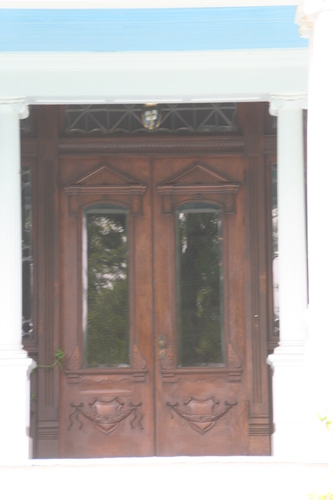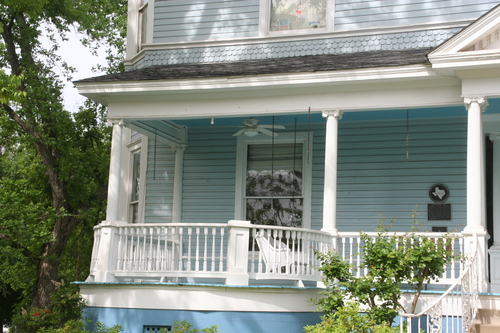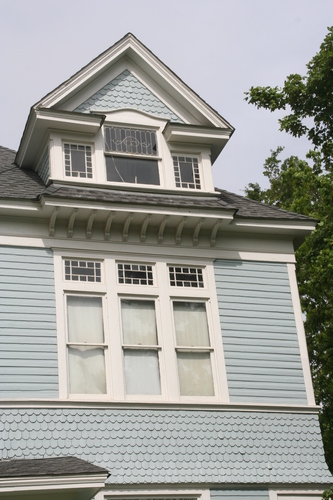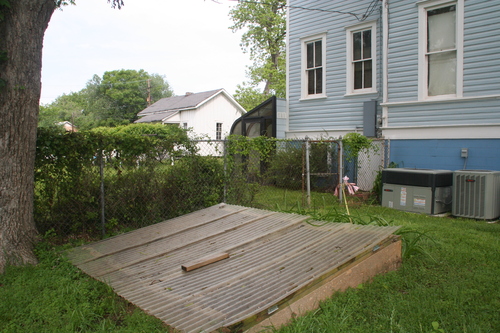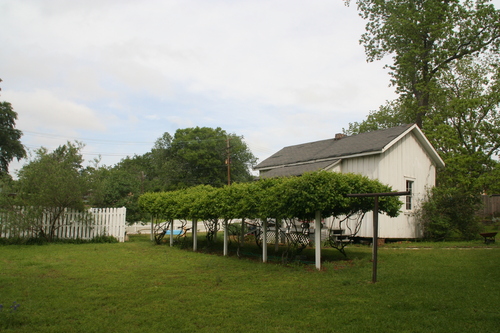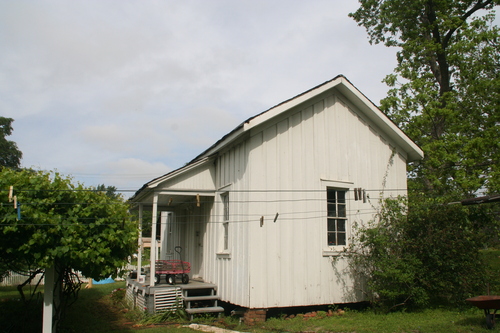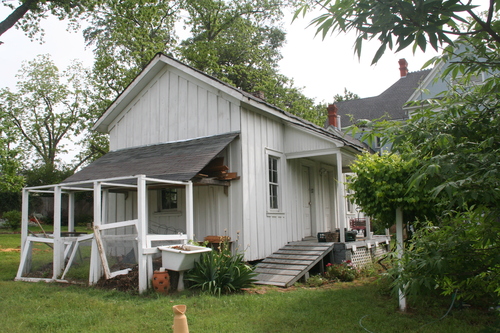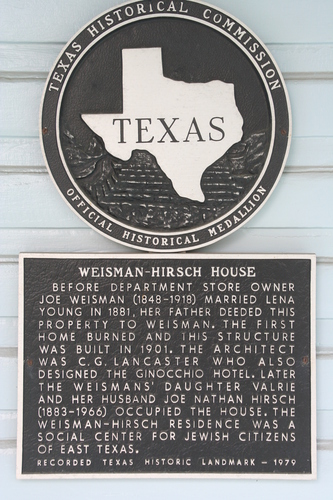313 S. Washington, Marshall
Current Owner: Gail Beil
Sanborn Maps:
- Marshall 1885, Sheet 3, Block 62, Lot 901
- Marshall 1889, Sheet 3, Block 62, Lot 307/902
- Marshall 1894, Sheet 3, Block 62, Lot 3-6
- Marshall 1899, Sheet 8, Block 62, Lot 3-6
- Marshall 1904, Sheet 8, Block 62, Lot 3-6
- Marshall 1909, Sheet 14, Block 62, Lot 3-6
- Marshall 1915, Sheet 3, Block 62, Lot 309
National Register File
The Weisman-Hirsch-Beil home was listed on theNational Register in 1981.TX Historical Marker
The Weisman-Hirsch-Beil home recieved aTX Historical Marker in 1979 and was the first landmark in Harrison County that recognized the local Jewish citizens.Architectural Survey
• Description: The Weisman-Hirsch home is a Queen Anne structure constructed of cypress and heart of pine, containing twelve rooms with a long central hall floor plan. The center-piece in the entrance way is a curly pine staircase that curls around the entry walls across from a leaded glass alcove. The home has many built-in book cases and closets throughout, and contains several gables. The facade of the home contains classical detailing and gingerbread elements with a double door entrance and sidelights. Two brick chimneys arise from the high pitched roofe of the three-story house. A large columned porch extends two-thirds of the way across the front and two back porches are located at the rear of the house. Outbuildings at the time of completion included a well house, wood house, laundry house, a barn, and a two-room servant's house. The only one remaining today is the servant's quarters.
• Significance: The Weisman-Hirsch home is not only a beatifully preserved example of Queen Anne architecture, but is a symbol of the the once thriving Jewish community in East Texas.
Historical Background
The Weisman-Hirsch home sits on property that was part of the 1836 land grant from the Republic of Texas to Peter Whetstone. Abraham Young purchased the property in 1881 and two months later sold it to Joe Weisman who later that same year married his daughter, Lena Young. (Ancestry.com) Born in Syracuse, New York in 1848, Joe came to Marshall in 1866 and lived with his mother's relatives the Doppelmayers. He worked for three years as a bookkeeper for L. Dreyfus, a local merchant, until he was able to open his own department store in 1878 which is known today as the Weisman Center.
The first house built by Joe Weisman in 1881 was destroyed by fire in 1898 which is evident in the Sanborn Maps of 1899. The present structure was built in 1901 and designed by C.G. Lancaster who also designed the Ginocchio Hotel. Joe and Lena Weisman were some of Marshall's earliest Jewish socialites and they're home soon became the social center for an elite group of Marshall's citizens. At the time the Weisman home contained more ornamentation and style than any other home in Marshall. The local paper, The Marshall News Messenger described the house as a "palatial home," and its style as "modern, bordering on colonial, featuring a handsome front porch as a novel feature called an 'open terrace.'"
Besides being successful business owners, the Weisman family were major supporters of the Moses Montefiore Temple in Marshall and helped raise money to build the temple. In 1910, Valerie, the third daughter of Joe and Lena, married Joseph Nathan Hirsch. Joseph Hirsch, born in Louisiana in1883, arrived in Marshall in 1895 and worked as a stock boy at the Joe Weisman & Company Store until he became the general manager. After Joe Weisman died in 1966, the home went to Valerie and Joseph Hirsch, and Joseph continued to manage the store. The Hirschs had four children and when Joe Hirsch died, the Weisman home was deeded to their oldest son Martin. After Martin's death, the home was deeded to his younger brother Joe, who owned it until 1972, when the current owners, Dr. Ralph Gregory and Gaile Kimes Beil purchased the home. When the Beils purchased the home, it was covered in vines and was in need of a face lift. The home still contained all the original light fixtures, glass paned doors, and fireplaces, but needed new paint and a new roof. Gail Beil is strong advocate for the historical and preservation community, and was the president of the Harrison County Conservation Society and a past chairman of the Harrison County Historical Commission. After Greg died in 2010, Gail put the house up for sell in 2012.
Very few significant additions have been made to the house in succeeding years. About 1912 a large sleeping porch was built directly above the downstairs bathroom. The cistern porch was enclosed and an upstairs bathroom built above it. In the 1920's, all but one of the downstairs sliding doors were replaced by hinged, wooden-framed glass doors.
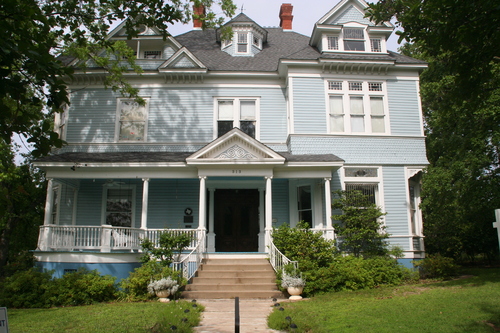
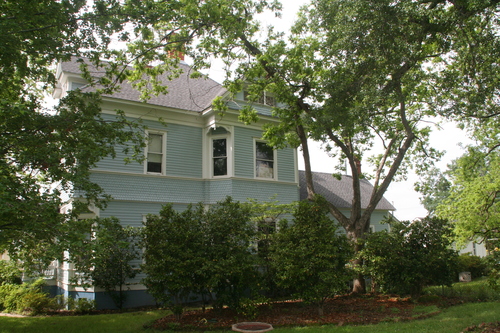
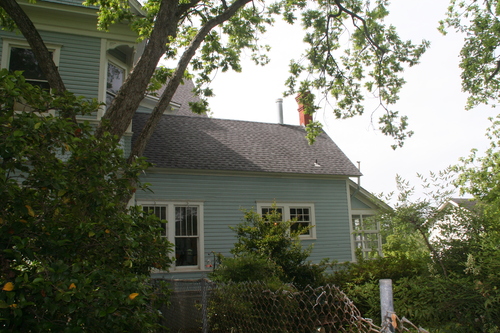
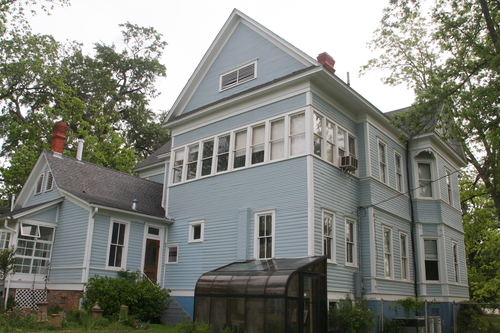
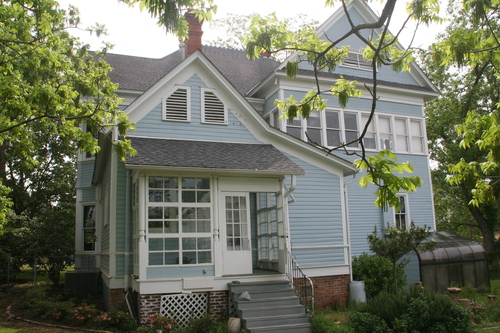
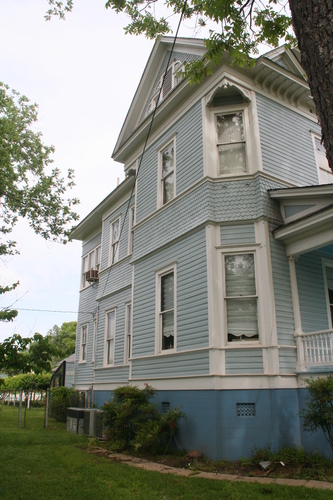
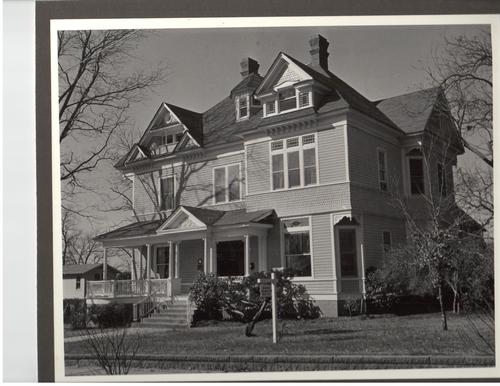
_rdax_333x500.JPG)
